The term seagulls doesn’t refer to a specific type of bird, but rather a host of different gull species. However, each of them starts out as chicks that hatch in nests built by their seagull parents. Once they emerge from their eggs, they can already see, they are fluffy as can be, and they can even take a stroll if they want to! However, there are some differences among gull species, which include how long they stay with their parents and what their initial appearance is. Discover 10 incredible facts about these seagull chicks and enjoy 10 adorable pictures to go along with them!
Baby Seagulls: Incredible Facts
1. They’re Extra Fluffy For a Reason
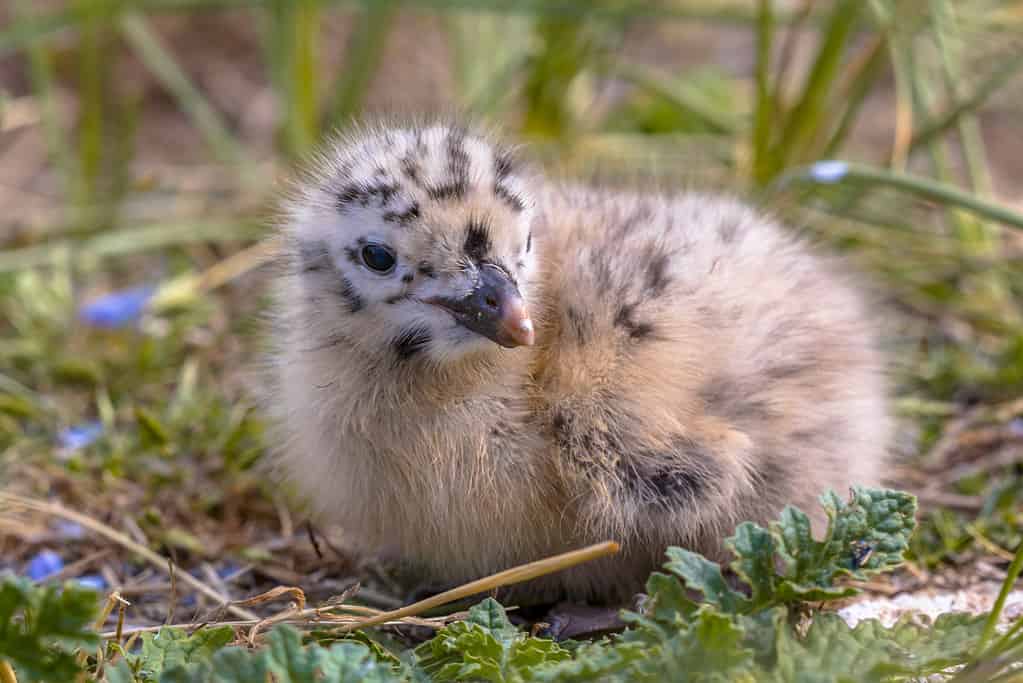
Seagull chicks have extra fluffy down feathers after hatching to help keep them well-insulated.
©CreativeNature_nl/ via Getty Images
Those down feathers that fluff up, making seagull chicks look extra cute are there for a reason. These are extra fuzzy feathers meant to help keep them well-insulated and warm. The exact array of colors differs depending on the type of seagull species, but all seagull chicks have these thick, protective feathers right after they hatch. Despite being equipped with these feathers to keep them toasty, during the first couple of days after hatching, they rely on their parents to keep them warm (particularly at night when temperatures drop). Sometimes, seagull chicks stay with their parents for several months but others leave the nest much earlier.
2. They Hatch With Camouflaging Expertise
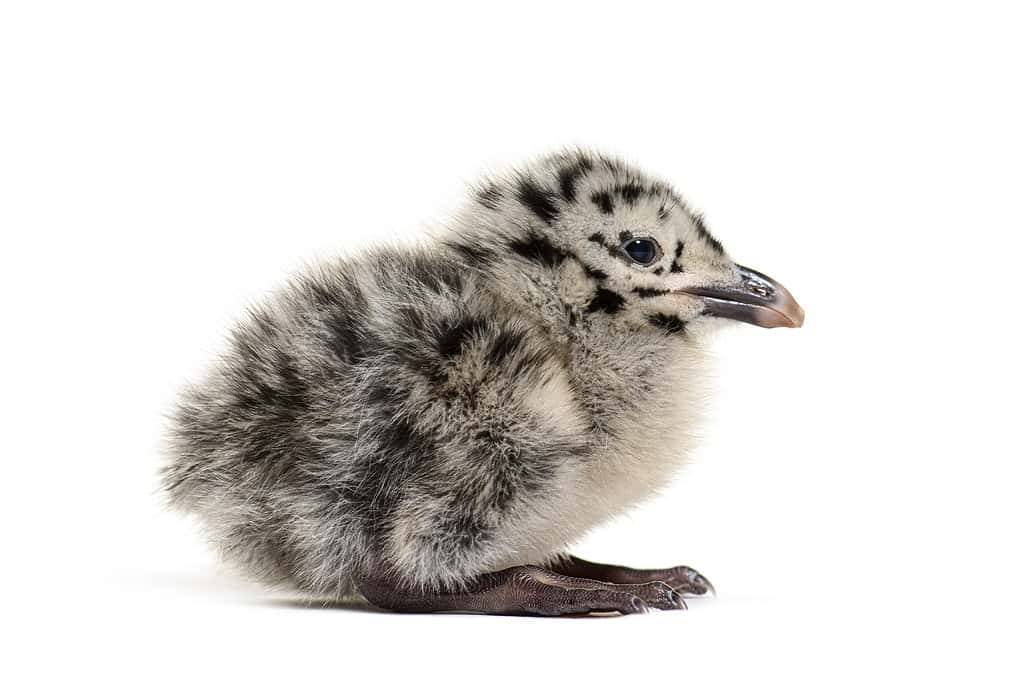
Seagull chicks usually have mottled fur that allows them to camouflage into their environment effortlessly, keeping them safe from predators.
©GlobalP/ via Getty Images
It’s not even something they have to learn! Mother Nature equips them with camouflaging abilities right after hatching. Depending on the type of seagull chick and where it hatches, its initial downy feathers are going to be a specific color. Sometimes they’re more shades of grey and other times they’re shades of brown. However, they are typically mottled, which allows them to effortlessly camouflage into their surroundings.
This helps to keep them safe from predators as they have a more difficult time finding them. Sometimes, their nesting site is rather exposed, and their ability to camouflage immediately after hatching helps to keep them inconspicuous. Ultimately, this is an adaptation that has allowed them to survive during those early, vulnerable days and weeks.
3. They’re Insatiable!
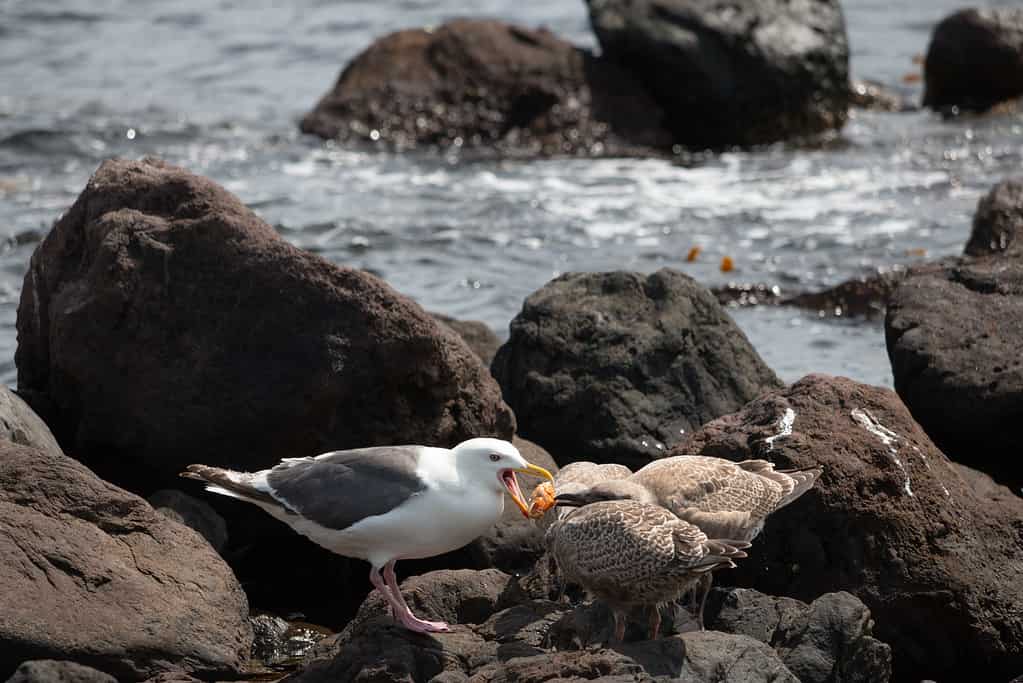
An adult seagull regurgitates food and feeds its chicks various items, including insects, crustaceans, and fish.
©Alexandra Scotcher/ via Getty Images
During their early development as chicks, seagulls have an insatiable appetite. They eat various foods delivered directly into their mouths by their parents. This is called regurgitation feeding. Basically, the seagull parents find food that they normally eat which includes fish and sometimes scraps that people leave behind. Then, they collect it.
They keep it stored in a pouch in their esophagus — this is called a bird’s crop — so that they can deliver it to their chicks. Once they get to their nesting site, the food is already partially digested. This is what they provide to their chicks. Since the chicks have not yet learned how to forage or hunt on their own, they rely on their parents to provide them with the sustenance and nutrients they need.
4. Their Eyes Change Color
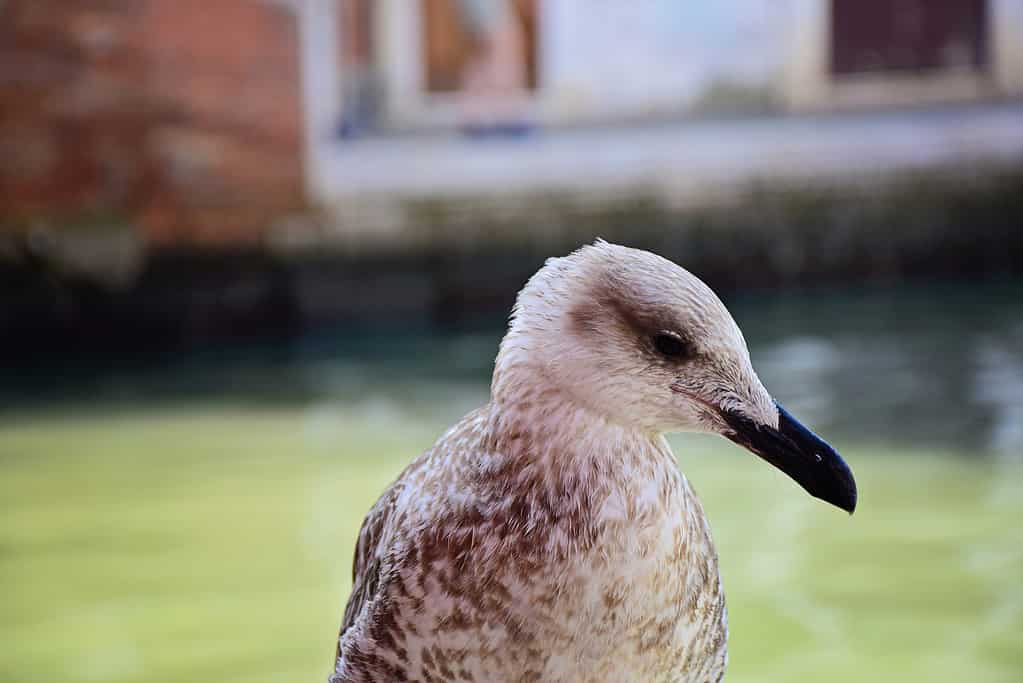
When seagulls hatch, their eyes are dark-colored. Often, though not always, they change to a lighter hue.
©Sladjana Muskinja/ via Getty Images
Immediately after hatching, seagull chicks have dark-colored eyes. They appear almost completely black. However, as they get older, their eyes start to change colors. These changes aren’t specific to seagulls, however, and typically occur across different bird species. Sometimes they remain a brown color throughout their lifetime, but on other occasions, depending on the species, they may change to a lighter hue.
5. Their Nesting Sites Are Sometimes Unusual
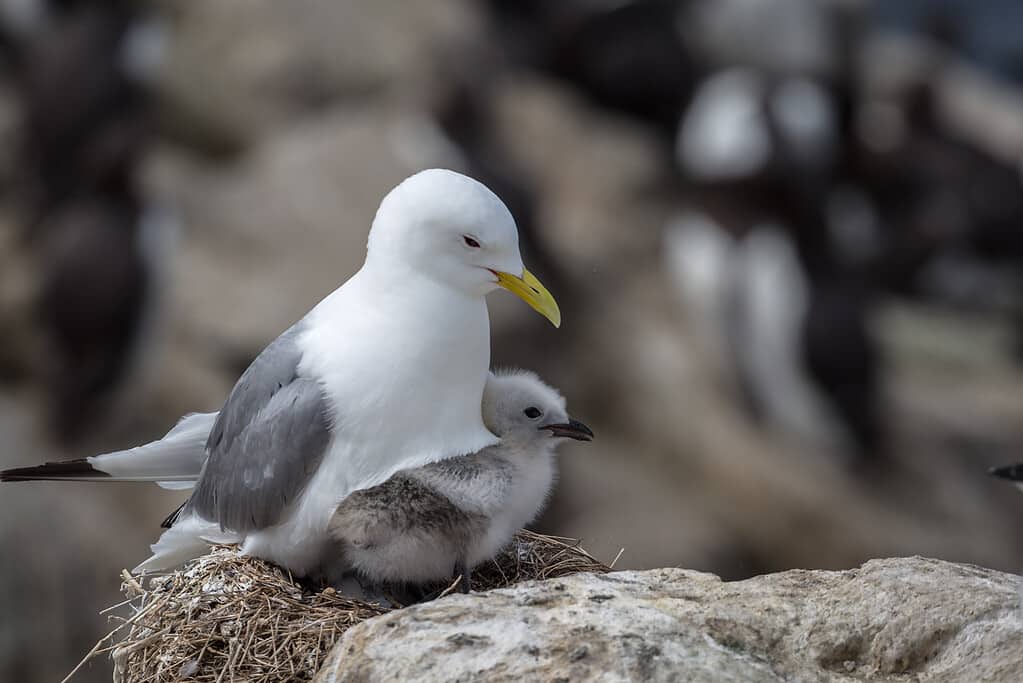
Kittiwake gulls nest on cliffs, keeping their chicks safe from predators.
©Andy_Oxley/ via Getty Images
Seagull parents sometimes nest in unusual areas. This depends on the species. Some set up their nesting site on a cliff, which sounds dangerous. However, they do this intentionally to protect their chicks from predators. Other seagulls may look for rocky beaches or even somewhere near plants to keep them concealed. They make great use of their environment and what is available to them. This is especially notable in human-populated areas, where seagulls make use of manmade buildings. They often use rooftops to set up their nesting sites and keep their chicks safe.
6. They Fight With Their Siblings!
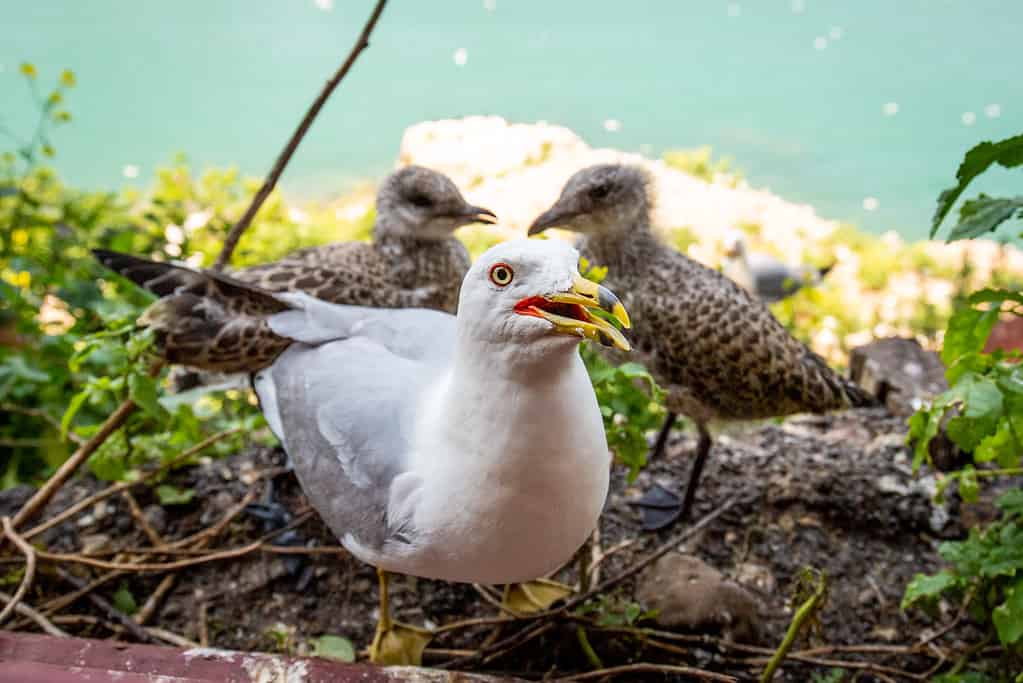
Seagull chicks may fight with one another but they also face aggression from other adult seagulls, which requires their parents’ protection.
©GummyBone/ via Getty Images
Much like others in the animal kingdom, seagull chicks also fight with one another. Sometimes, they compete because they’re hungry and they’re trying to get food from their parents. On other occasions, they demand attention. These little rivalries sometimes get quite aggressive and smaller chicks may not be able to put up as strong of a fight as other larger chicks in the nest. Chicks also face aggression from adult seagulls from other families.
7. They Learn to Walk Quickly
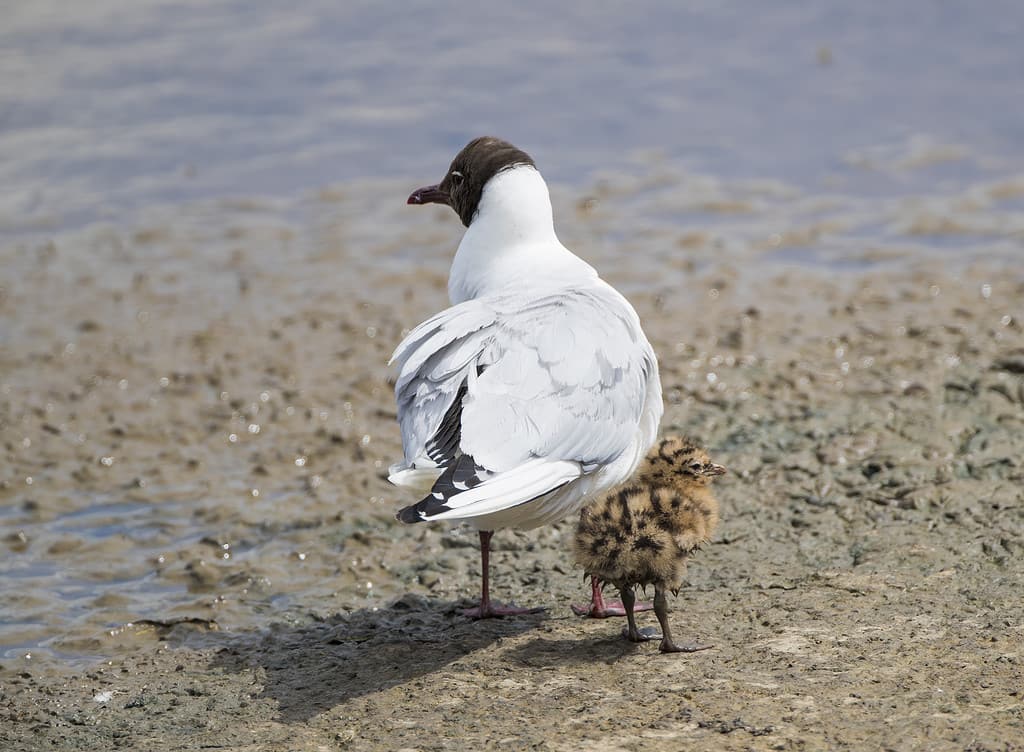
Seagull chicks start to walk away from the nest only a few days after hatching. But depending on the species, they stay with their parents for up to several months before going off on their own.
©Richard Hadfield/ via Getty Images
Although during those initial days after hatching, they rely on their parents for warmth and continue relying on them for food, they do develop the ability to walk rather quickly. It’s an instant ability, actually, but they don’t usually employ it right away. They wait a couple of days, and then they start to explore the area outside of their nest. They can also follow their parents as they walk around, looking for food sources.
8. They Don’t Need to Deal With a Broken Home
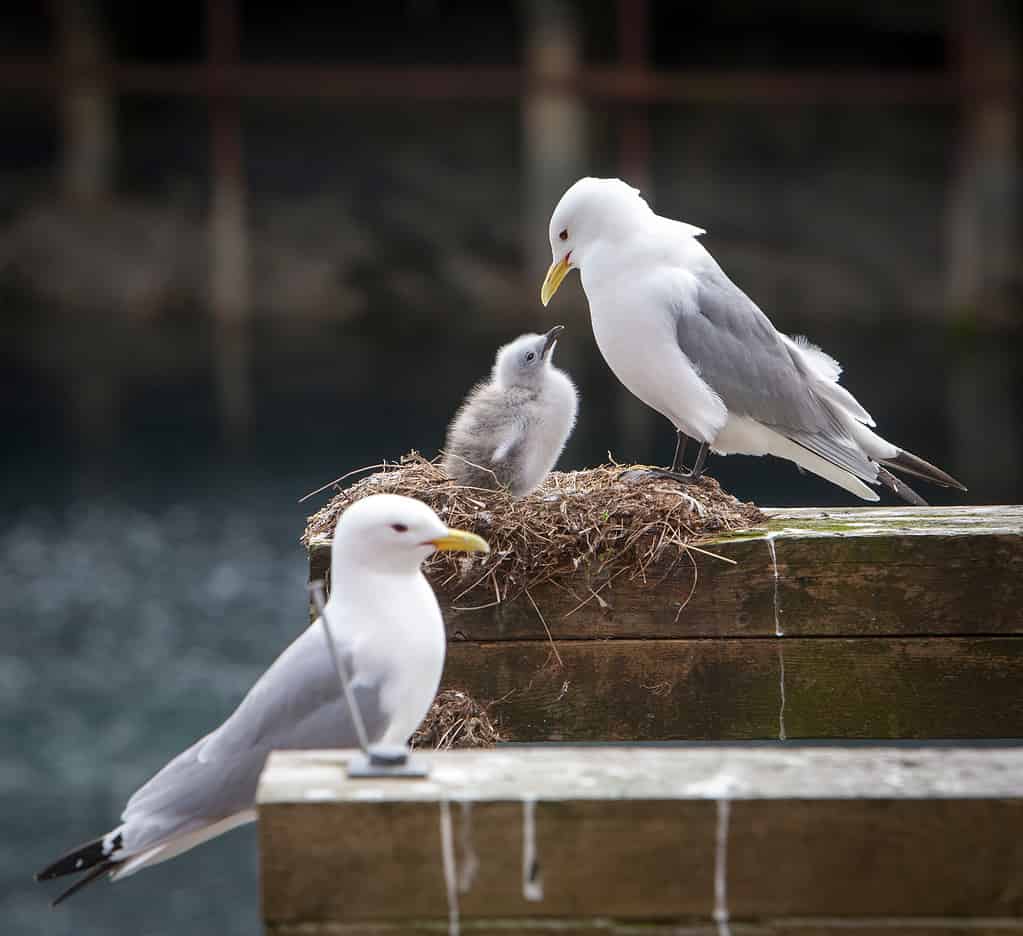
Seagulls mate for life though they may need to ‘divorce’ if they are unable to produce healthy chicks.
©JimmyLung/ via Getty Images
Some male animals don’t stick around to rear their young. However, that’s not the case for seagull chicks. They get to enjoy both of their parents! This is a fantastic advantage for seagull chicks because it ensures they are protected. When one of the seagull parents leaves the nest, the other can stay behind to look after the chicks. Typically, seagulls mate for life. However, if they are unable to produce healthy chicks, they may have to separate.
9. Their Mimicry Skills Are Impressive
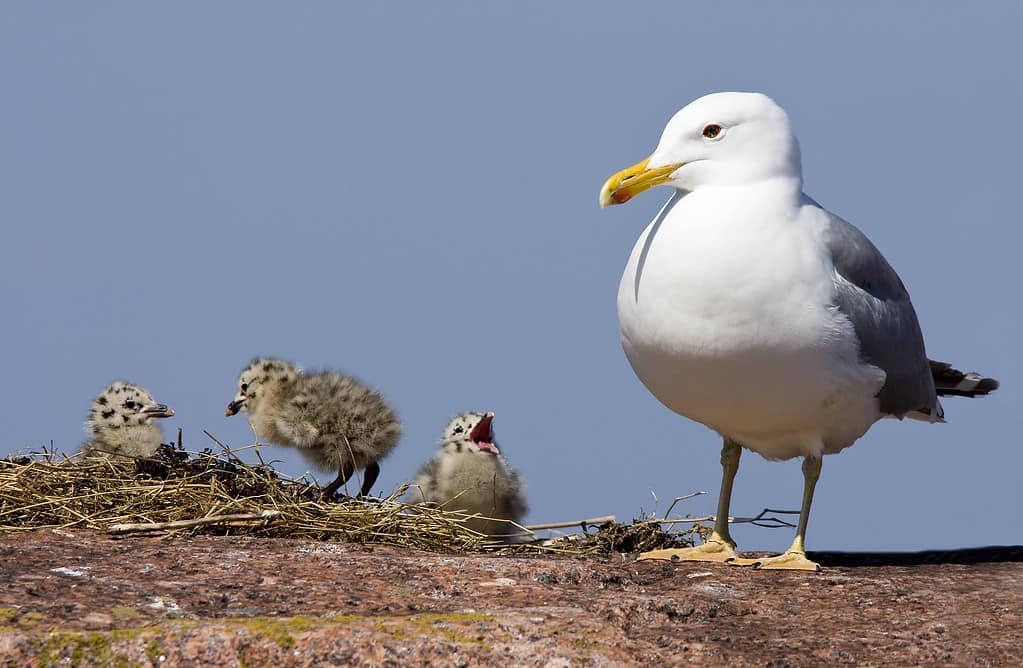
Seagulls make a range of vocalizations, mimicking the sounds they hear as they demand attention from their parents.
©aseppa/ via Getty Images
Seagull chicks make several vocalizations, sometimes whimpering or whining to get the attention of their parents. However, they start listening to the sounds their parents make when they’re still inside their eggs. Then, they start learning how to make this range of vocalizations themselves. It’s common to hear them trying to call out to their parents, especially around urban environments where they’re within earshot. Even as they grow older, they mimic the new sounds they hear.
10. They Don’t Keep Their Baby Feathers

Seagulls hatch with down feathers but later develop their adult plumage.
©Elena Nechiporenko/ via Getty Images
Seagull chicks start developing their adult feathers over time. For example, during their juvenile stage, they still have some of their down feathers, but they also start developing their juvenile feathers. This makes them appear less fluffy as they grow. Eventually, they transition to their adult plumage.
This can take several months but it all depends on the type of seagull and the environmental conditions. Some seagulls reach maturity around two years while others take a bit longer into their fourth year. At this stage, they only have their adult plumage, which continues to provide them with protection but changes their appearance to a more sleek, less fleecy look.
The photo featured at the top of this post is © iStock.com/Bill_Dally
Thank you for reading! Have some feedback for us? Contact the AZ Animals editorial team.






